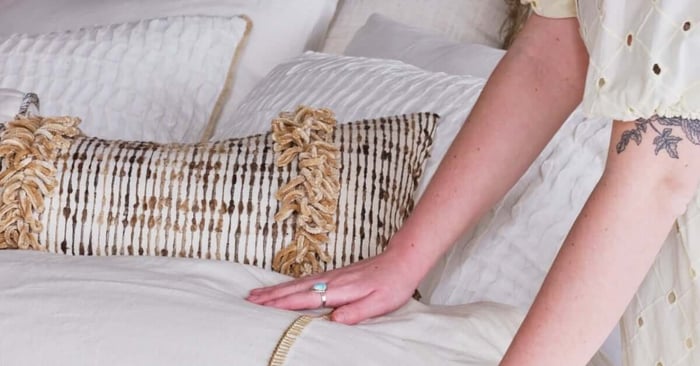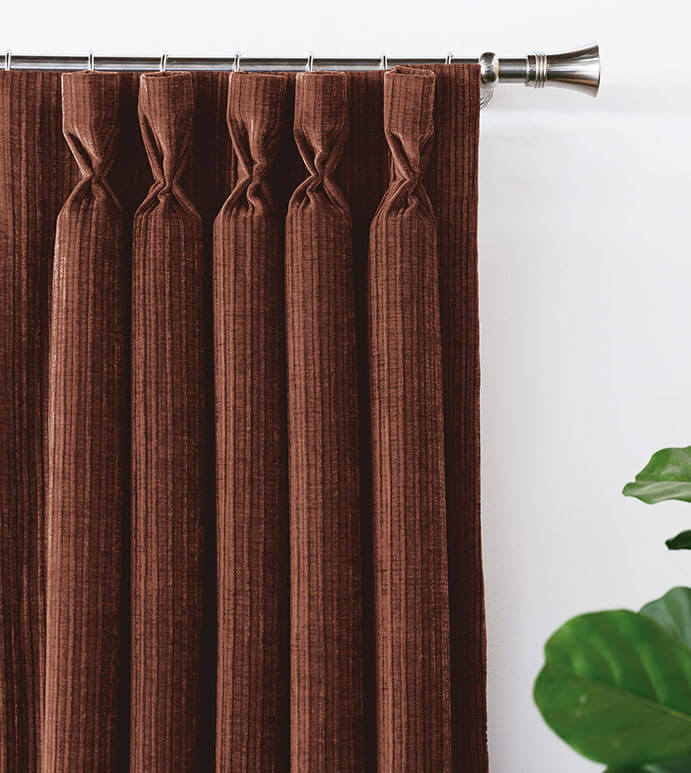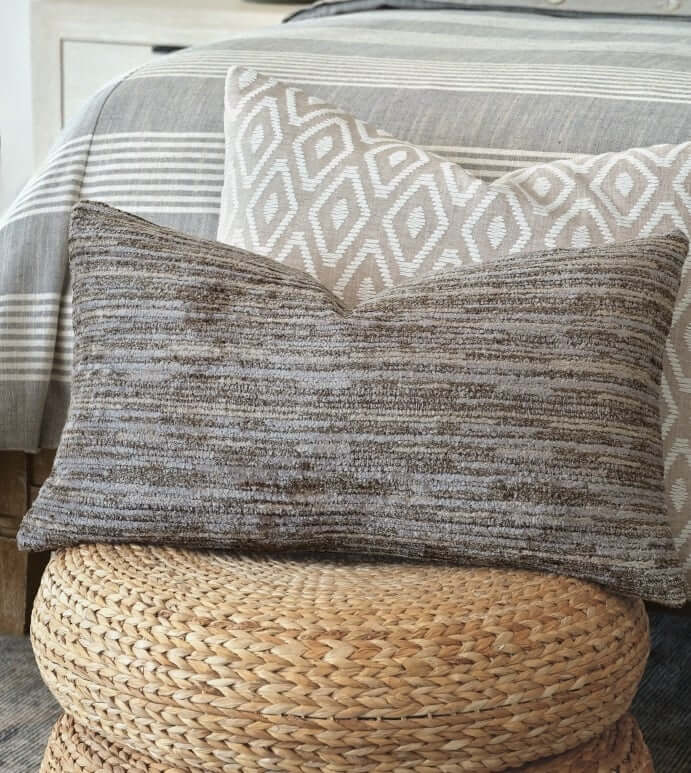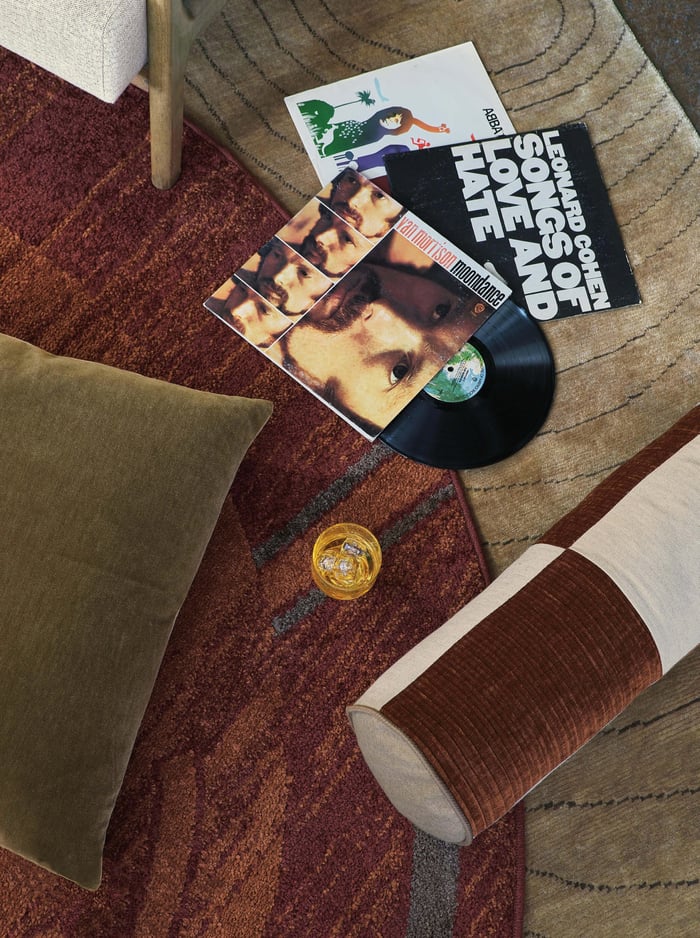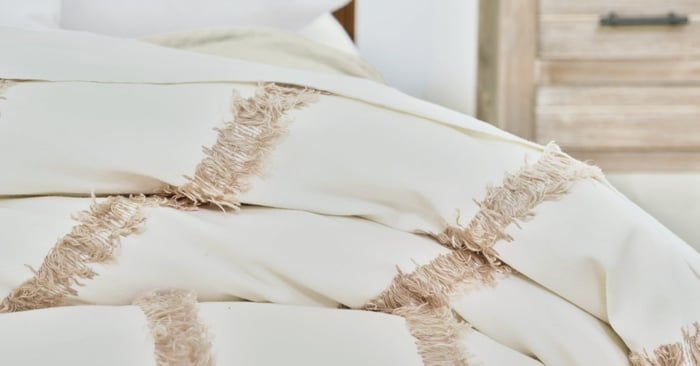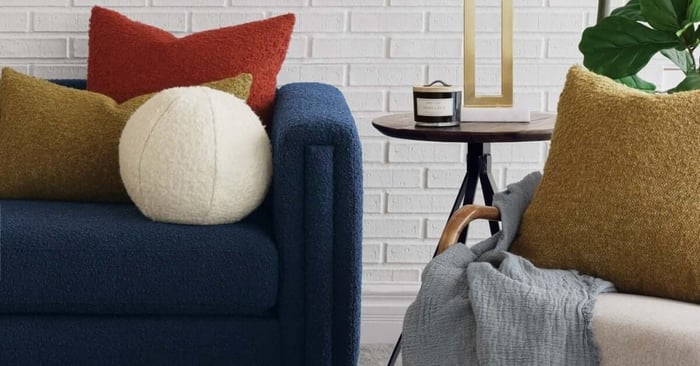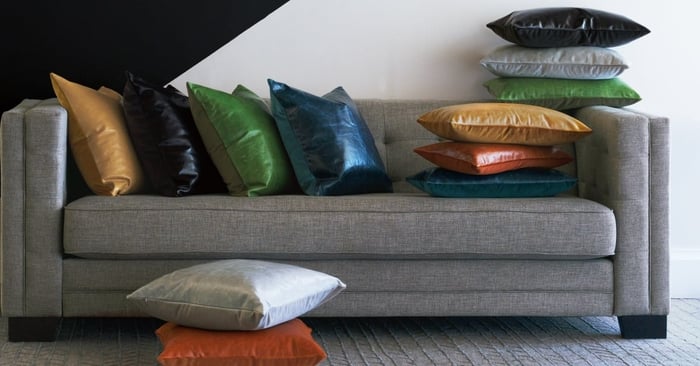Table of Contents
Whether you’re looking to upholster a headboard or keep warm in the winter, you've probably come across sumptuous chenille fabrics. Considered a close sister of velvet, this luxurious fabric is renowned for its soft texture, versatility, and lustrous sheen. Its durability and softness make it an ideal choice for a wide variety of projects — from curtains to clothing to cushions.
What is chenille?
It is a soft, fuzzy textile with a velvety hand and unique sheen. Its name means “caterpillar” in French, as its ribbed, wooly yarn is said to resemble the fuzzy creature. This fabric can be made from a wide range of fibers, including linen, cotton, silk, wool, and synthetic fibers.
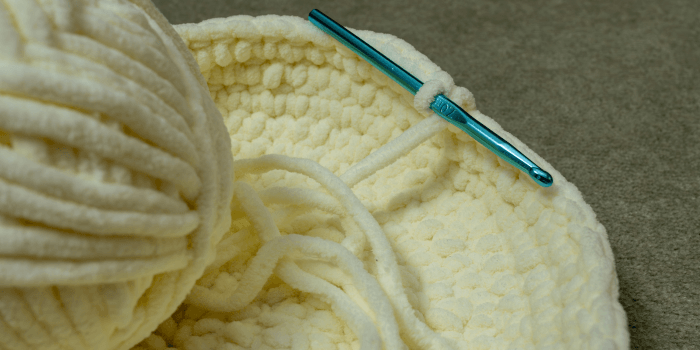
Chenille yarn is made by placing short fibers between two ‘core’ yarns, and then twisting them together to make one strong thread for weaving. Think of a pipe cleaner! The yarn is then heat treated to hold the pile fibers in place and keep them nice and fluffy.
From there, the fuzzy yarn can be woven in a wide variety of methods and patterns. The effect is a fabric that is soft to the touch with a beautiful drape. The pile threads catch light, giving it a shiny, almost iridescent glow. The wooly yarn creates a thick fabric that is durable enough for upholstery, yet soft enough for bedding and clothing.
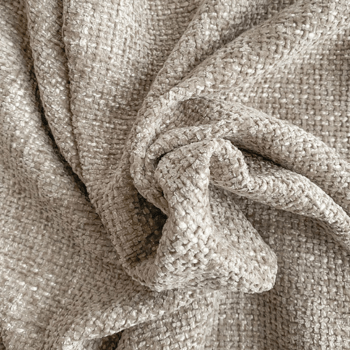 Solid
Solid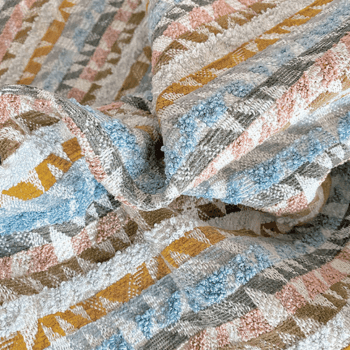 Woven Pattern
Woven PatternA little history
Styling at home
There are endless uses for chenille in home textiles. Its warmth makes ideal blankets, duvet covers, and comforters for chilly winter months. Drape your bed in its softness and sheen with Eastern Accents’ Tilda Duvet Cover and Comforter. The creamy white textile creates a cozy yet refined aesthetic, accented with silver buttons and a velvet edge welt for a touch of contrast.

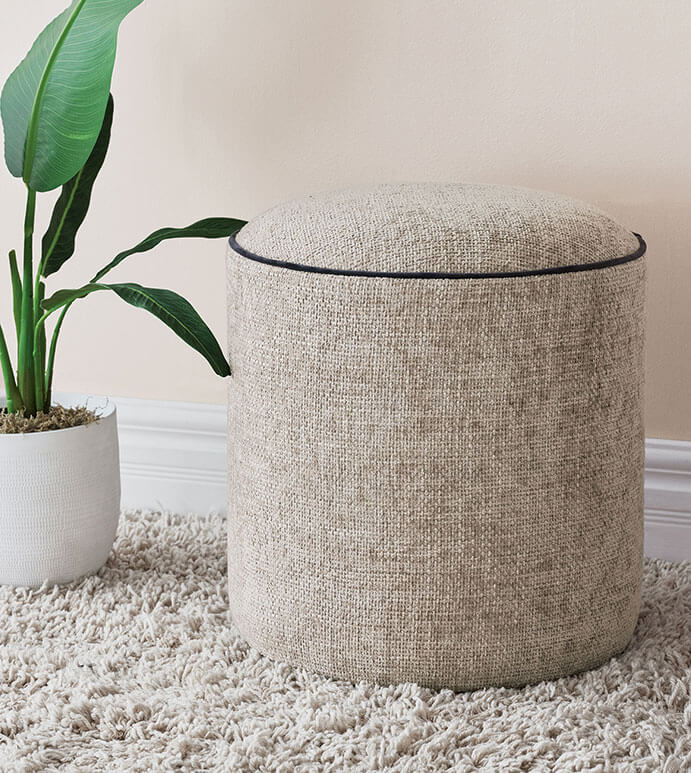
Chenille is a popular material for drapery because of its thickness and excellent drape. Additionally, it will catch the light from your windows and give off a soft sheen. Our Rufus Curtain Panel rust-colored panel is crafted with tailored pinch pleats and is available in custom sizing.
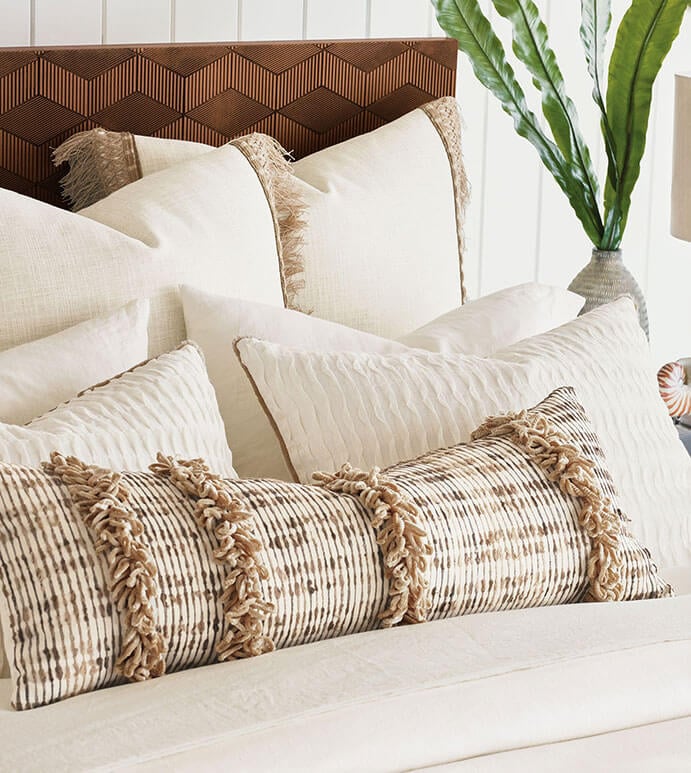
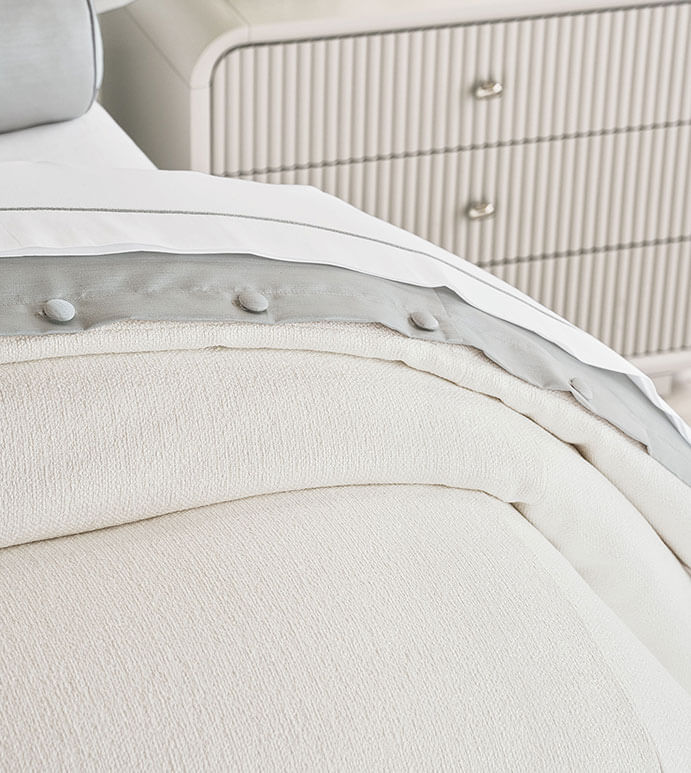
Chenille decorative pillows make beautiful, cozy additions to your bedding or living room. Our Bembe Decorative Pillow is Jacquard-woven in an abstract horizontal pattern. Its rich olive color adds to the depth and texture, creating a cozy and inviting look.
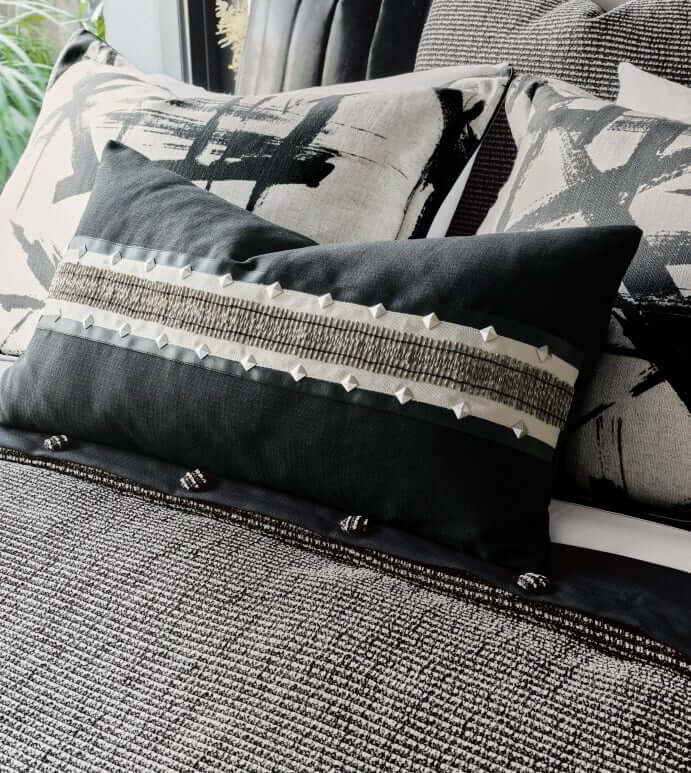
Because this fabric is so thick and durable, it works wonders for upholstery. Our trendy Alma Textured Ottoman features a streamlined silhouette, a luxurious chenille weave, and classic welt detailing. Easy to adapt to any space, it is perfect as extra seating or a stylish footrest.
Both our Cabo Silk Bolster and Cabo Loop Fringe Decorative Pillow use a loop trim made of chenille yarn, which adds a playful texture that both catches the light and provides supreme softness.
In the Spotlight: Tuthill
Relax into Thom Filicia's newest bedding collection, soft and contemporary Tuthill. These cozy grays and warm neutrals create a laidback foundation for layers of pattern and texture. From a woven stripe and plush chenille to embroidered diamond motifs, Tuthill has no shortage of textile detail. Accent the linen-blend duvet cover with a dotted print for another level of dimension, or introduce solid taupe Euro shams for a streamlined style.
Cozy up your bedding with this plush Tuthill decorative pillow. Featuring an abstract stripe pattern, warm and cool shades of gray blend together to create a versatile color scheme that is both contemporary and comforting.
Pair with our Tuthill Embroidered Standard Sham. Neutral and bright, this sham is crafted from beige fabric with white diamond embroidery. The subtle texture and simple pattern make this laidback design ideal for layering.
Cleaning and Care
Chenille needs a bit more attention than other materials, but caring for it doesn’t have to be hard. Here’s how to keep it in pristine condition:
To start, do not throw your chenille in the wash. The pile yarns and heat treatments can come undone during washing, even on low and cold settings. Dust and hair may get trapped in the fuzzy fibers, and can easily be removed with a soft-bristled brush or vacuum attachment. Small stains can be spot-treated by hand.
First, use a dry cotton cloth to blot - not rub- the stain to remove as much moisture as possible. You can then blot further using mild water-free solvents or dry cleaning products. Professional dry cleaning is recommended for stubborn stains and larger products, such as duvet covers and comforters. For more information, please contact our customer service department.
We hope this guide has helped you learn about a luxurious, one-of-a-kind material. If you want to use fuzzy, versatile texture for your next project, Eastern Accents offers fabrics by the yard along with plenty of other soft goods. With a variety of patterns and colors to choose from, we hope you can find the perfect match for your personality and home!
FAQs
What is chenille?
Chenille is a soft, fuzzy textile with a velvety hand and unique sheen. Its name means “caterpillar” in French, as its ribbed, wooly yarn is said to resemble the fuzzy creature. This fabric can be made from a wide range of fibers, including linen, cotton, silk, wool, and synthetic fibers.
How is chenille made?
Chenille yarn is made by placing short fibers between two ‘core’ yarns, and then twisting them together to make one strong thread for weaving. Think of a pipe cleaner! The yarn is then heat treated to hold the pile fibers in place and keep them nice and fluffy.
From there, the fuzzy yarn can be woven in a wide variety of methods and patterns. The effect is a fabric that is soft to the touch with a beautiful drape. The pile threads catch light, giving it a shiny, almost iridescent glow. The wooly yarn creates a thick fabric that is durable enough for upholstery, yet soft enough for bedding and clothing.
How was chenille invented?
How do you wash chenille?
- Do not throw your chenille in the wash.
- Dust and hair may get trapped in the fuzzy fibers, and can easily be removed with a soft-bristled brush or vacuum attachment.
- Small stains can be spot-treated by hand.
- Use a dry cotton cloth to blot--not rub--stains to remove as much moisture as possible. You can then blot further using mild water-free solvents or dry cleaning products.
- Professional dry cleaning is recommended for stubborn stains and larger products, such as duvet covers and comforters.
